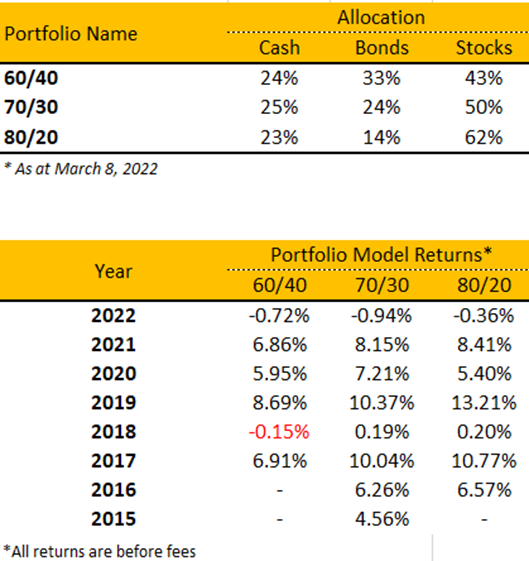March 2022 Market Update
Stephen Biddle - Mar 10, 2022
As February has proven: you never know what the day is going to bring. With the market drops, the war in Ukraine, and COVID continuing to affect our lives, there is a lot of tension and unease in the world.

Money is a tool. It's something that supports your life!
As February has proven: you never know what the day is going to bring. With the market drops, the war in Ukraine, and COVID continuing to affect our lives, there is a lot of tension and unease in the world. We give our view on how these events could affect the market and what we are preparing for. Ashley shares an important cautionary tale in her Millennial Minute, and we share our performance. Take a moment to brows the blog and reach out with any questions you might have.
Interesting Charts
Market conditions need to be looked at over different lengths of time to really grasp how your portfolio is performing.
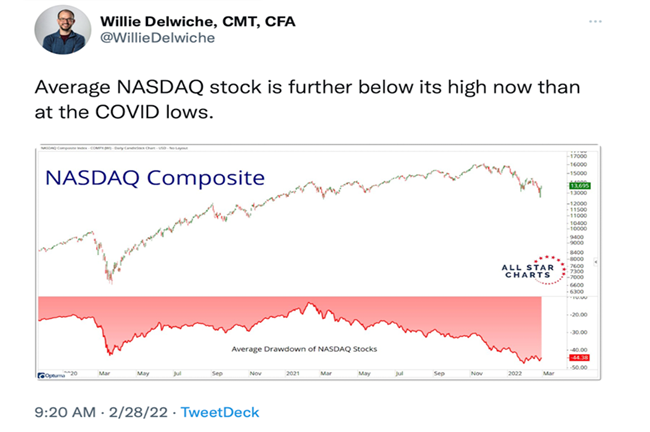
2) Hmm... you learn something new everyday!
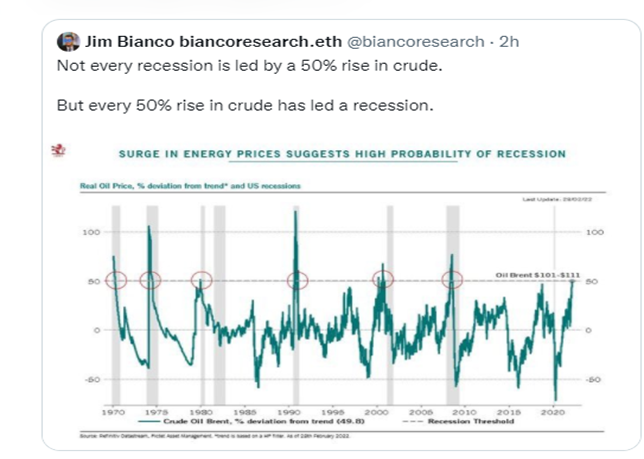
3) Oof! A heavy truth in the midst of an overpriced market.
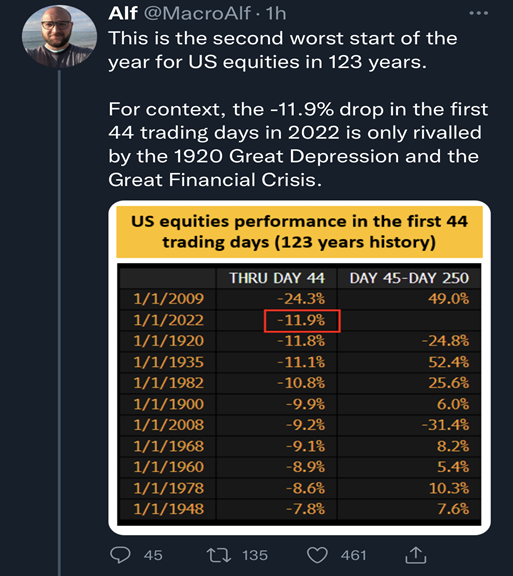
Source: @MacroAlf on Twitter: March 8th, 2022
4) China has proven to be an economic powerhouse and a major market competitor.
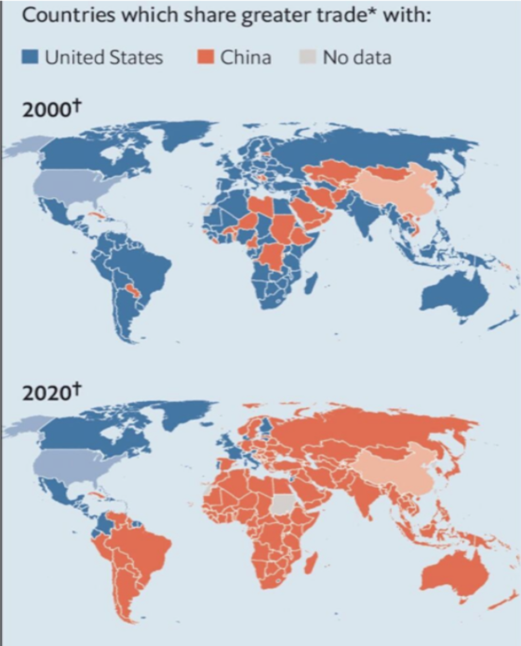
Technical Comments
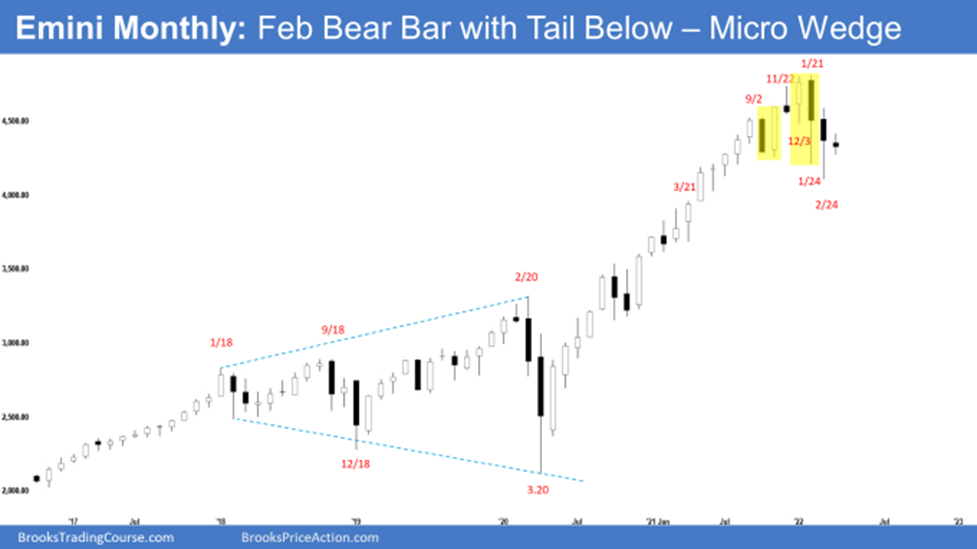
- The February monthly candlestick was a bear bar with a long tail below, closing slightly above the middle of the bar. It broke below the second OO (outside-outside) pattern by trading below the January low but reversed back higher.
- We have said that while February is a consecutive bear bar, closing above middle of the bar and its long tail below make it a weak sell signal bar.
- The bears want March to break below February followed by a measured move down to around 3600 based on the height of the 7-month trading range. They will need March to close below the February low to convince traders that a deeper selloff is underway.
- The bulls see the January – February selloff as a long-overdue pullback. They want a reversal higher from a micro wedge bull flag (December 3, January 24, February 24) or a double bottom bull flag with the May 2021 or June 2021 low and a retest of the trend extreme followed by a subsequent breakout to a new high.
- There is a 50% chance that the February 24 low will be the low of the year. March and April form the pair of consecutive months that is the most bullish of the year.
- The bull trend on the monthly chart has been very strong. Even if it sells off for a 10 to 20% correction, that would still only be a pullback on the monthly chart and not continue straight down into a bear trend.
- The best the bears will probably get on the monthly chart is a trading range for many months to around a 20% correction down to the gap on the monthly chart below April 2021 low, and around the 4,000 Big Round Number.
- Most pullbacks since the pandemic crash only lasted 1 month (Jan 2021, Sept 2021, Nov 2021) except for Sept-Oct 2020 which lasted 2 months. (On a side note, there was a lot of uncertainty during Sept-Oct 2020 period leading into the election between Trump vs Biden.)
- Will March be another bear bar? There have not been 3 consecutive bear bars since September 2011. If there is another leg down, traders will see it as the 3rd push down since January, therefore a possible wedge bull flag.
- The gap up in April 2021 could lead to a measured move up to 5,801 before the bull trend finally ends.
What's Happening
All eyes are on the invasion of Ukraine by Russia and we want to reiterate that our thoughts are with the Ukrainian people and the numerous Canadians of Ukrainian descent as that great country enters another terrible ordeal. A somewhat surprising byproduct of this unprovoked aggression by Russia has been the reaction from Western allies which has been more forceful and unified than many would have predicted. Case in point, even Switzerland, in an act unprecedented in modern memory, has announced that it will forego its commitment to “neutrality” in favor of adopting sanctions against Russia that will be in line with those already adopted by the European Union.
To date, major (upward) volatility has been seen in energy, grain and metal markets which makes sense given Ukraine’s massive wheat production and the fact that Russia produces about 10 million barrels of oil per day, supplies 40% of Europe’s natural gas needs (with much of that gas going through Ukraine currently) and produces sizable quantities of metals. Given North America’s low bilateral trade exposure with Russia/Ukraine, we believe it is primarily through this prism that investors should consider the market ramifications of this military action. Certain well-known publicly traded companies do have material sales exposure to Russia but they tend to be the exception rather than the rule (e.g. Philip Morris International - 8%, Pepsi - 4%, McDonald’s - 4%). According to PSC Macro Research, the exposure of US banks to Russian banks is small—on the order of less than $15 billion. But “European banks have much larger exposures to Russian banks ($25 billion+ in both France and Italy). Combined with the fact that European banks are less solid than U.S. banks and with the larger proportion of Russian debt held by Europeans, the European Central Bank is much more likely to be concerned about the current crisis turning into a systemic problem than the Fed is, making it less likely to raise rates this year than it was last week”.
We never advocate profiting from human tragedy but Canada -and the TSX in particular- happen to be well positioned for higher inflation (as we have discussed extensively) and the current geopolitical crisis. In our view, the impact on energy markets will be more substantial and longer lasting than many realize and should encourage Europe to look to North America to secure a safer supply of Natural Gas (through further LNG investments for instance). Unequivocally - from our perspective - the key winners are North American energy producers and especially oil sands companies like Canadian Natural Resources, Suncor, Cenovus and MEG Energy as investors look for long lived oil reserves in politically stable areas. Renewable energy stocks -and we have several high quality investable ones in Canada- also figure prominently in supplying Western Europe’s future energy needs. Higher grain prices will be a huge boon to farmer incomes which should continue to support agriculture equipment manufacturers such as Agco or seed companies like Corteva, two names we happen to recommend to investors currently.
We have long maintained that exogenous shocks tend not to have a long lasting impact on the market and that the economic cycle is by far the most important driver of financial asset returns. We stand by that view. The table below shows the market impact of different military conflicts and the results are clear: a negative initial reaction with a subsequent recovery in the vast majority of cases. Going back to 1940, the median downdraft was 2% followed by a gain of 8% in the next 6 months and over 20% in the subsequent year. The Russian invasion of Georgia in 2008 is an exception (with very negative performance across that timeframe) but that was in the context of the financial crisis.
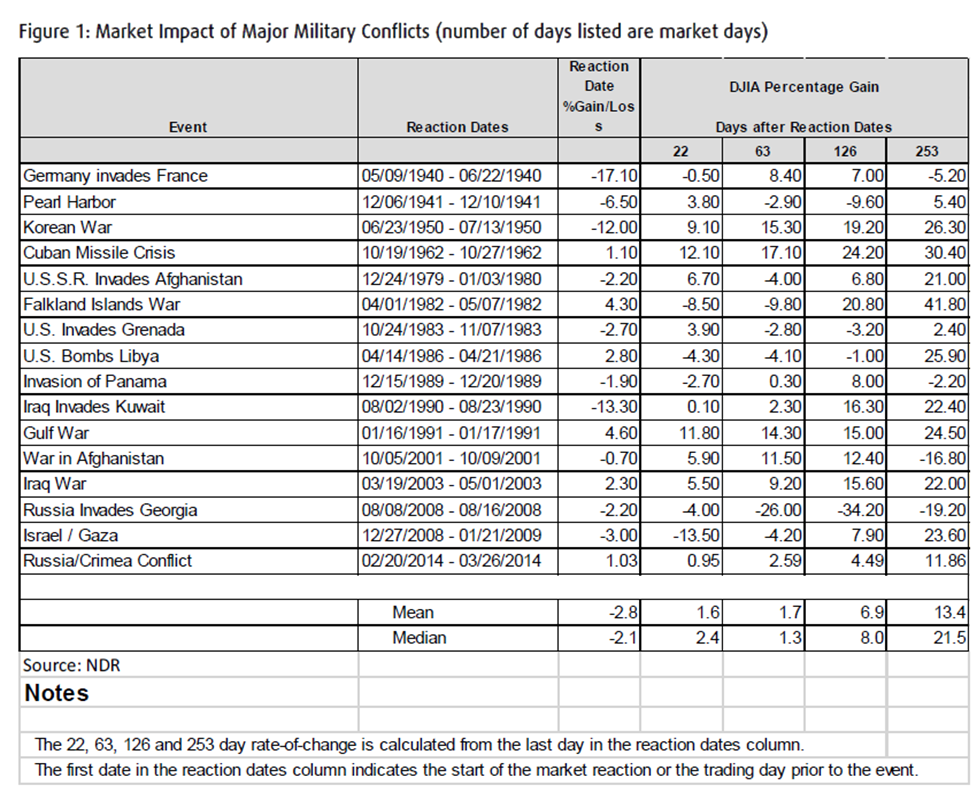
The Portfolios
We have always believed that it is better to take a less volatile path to meeting retirement goals. In strong market years, such as 2021 we have a tendency to underperform and during down turns in the markets we outperform.
Year to date the S&P 500 is down over 12% and none of our portfolios are down more than 1.25%.
We have avoided much of the downturn in the markets this year. We are sitting with around 23% in cash. We added to Ratheon Technologies Corp and Citigroup Inc and initiated new positions in Alta Gas and AGCO. We took profits on Cenouvus Energy, BCE, Royal Bank, Bank of Nova Scotia and our tactical S&P position.
Returns on our 60/40, 70/30, and 80/20 portfolios before fees: As of March 8th, 2022
Millennial Minute
This month Ashley is back with a new article, sharing her experience with budgeting and her financial journey. This month she has a cautionary tale to share with you - and it involves credit cards.
Click here to read more! And feel free to share this with your kids and younger investors.
Planning Topic
BMO Financial Group’s Retirement Study1 found that while the average amount Canadians believe they need to retire has increased 12 per cent since 2020 to $1.6 million, fewer than half (44 per cent) of Canadians are confident they will have enough money to retire as planned.
How confident are you in your retirement plan? Are you more ready than the average Canadian?
Click here to read more!
